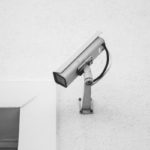Smart Homes 2019: What To Expect
We have seen smart technology take over many aspects of our lives. From smart phones to smart watches, smart technology continues to improve our day to day living and is spreading to our homes. A smart home incorporates smart technology into your house for added convenience and security among other benefits. Find out how you can start turning your house into a smart home this year.
Lighting
This is the most common way that people ease into smart home technology. Smart lighting allows you to set a timer for your lights and control them through an app or possibly link them to your own voice assistant. But smart lighting is more than just convenience. Adjusting lighting when you are away from home helps to deter burglars by making it appear as if someone is home.
Cameras
Security cameras also act as a deterrent, ensuring that your property is monitored and informing potential trespassers that they are being watched and recorded. Should they proceed anyway, you are equipped with video evidence of the burglary.
Smart surveillance cameras, often equipped with high definition technology, can be installed anywhere in or around your home. When motion is detected, these security cameras can automatically begin recording and send you an alert via smart phone or device when this happens. Some smart cameras even employ facial recognition to inform you when certain people have arrived home or an unknown visitor is present.
Leak Detection
You also want to protect your home from damage, which is why smart leak detectors are growing in popularity. These alert you when water is detected where it shouldn’t be, preventing costly water damage and enabling you to address broken appliances or burst pipes immediately. Considering the cost of damages that you may be preventing, investing in these leak detectors is a smart choice.
Fridges
While not necessary, smart fridges offer a range of innovative and convenient features:
- Transparent doors to easily see what’s inside without opening the door
- Doors that open as you approach
- Frost-free smart drawers
- Interior cameras which can be viewed remotely so you can check inventory while you’re out
- Interactive touch screens for communicating, pinning notes, and even watching films
Doorbells
Much like a smart camera, a smart doorbell allows you to see who is at your door via your smart phone, with additional security features:
- Alerts when someone rings the doorbell
- View live footage from your front door
- Hear and speak to visitors
- Record video remotely to watch back as any time
- Motion sensor alerts when visitors don’t press the doorbell
Which smart home trends have you adopted already? Which smart home trends are you considering? Share with us on Facebook, Google+, Twitter, LinkedIn, and Pinterest.
For a wide array of security cameras and CCTV surveillance equipment, please visit us at SecurityCamExpert.com! To learn more about our installation services, or request a free quote, please call 888-203-6294.
What You Need To Know About Wired Security Cameras
So you’ve been debating between wired and wireless security cameras and you’ve finally made a decision to install wired security cameras. Here’s what you can expect:
Additional Equipment
When you purchase a wired security camera system, it will likely come with a DVR box, security cameras, and sometimes the necessary cables. However, the monitor, mouse, and keyboard (all of which are required for a wired security system) will need to be purchased separately.
Unless you have these items sitting around your home, it’s important to factor the cost of these additional items when you are shopping for a system. The only way you may be able to get around this is if you were to connect your cameras to a NAS that is already managed from your computer.
Cable Planning
Your security cameras need to be directly connected to the DVR box, therefore, you will need to be creative with how and where you will run cables across your home. Where you mount your cameras and the location of your DVR box will determine the cable routes. If you are doing this yourself, there are a few things to keep in mind.
Before beginning, make a plan and know the exact layout of your house. Also, find out if anything is in between your walls such as insulation or fire blocks that could potentially hinder cable runs. Map out your cable route before beginning the process, and invest in the proper tools to help you accomplish this task.
The Dirty Work
Again, if you will be installing your wired security camera yourself, be prepared to get your hands dirty. If you’re lucky, you may be able to simply run cables down through the floor, across the basement, and up through the floor on the other side of the house. However, you may be required to crawl through attics and crawlspaces. With that said, wear the appropriate attire and invest in good knee pads to protect yourself.
Network Connection
The benefit of having a wired security camera system is that you don’t need to connect it to the internet for it to work. The downside is that you cannot access it remotely when you’re away from home. While keeping your cameras off of the internet can be a safer bet, if you want to view your feeds remotely, you may want to consider connecting your cameras to your network.
If you need help choosing a wired security camera system and installing it, feel free to call 888-203-6294 or visit SecurityCamExpert.com. You can also connect with us on Facebook, Google+, Twitter, LinkedIn, and Pinterest.

